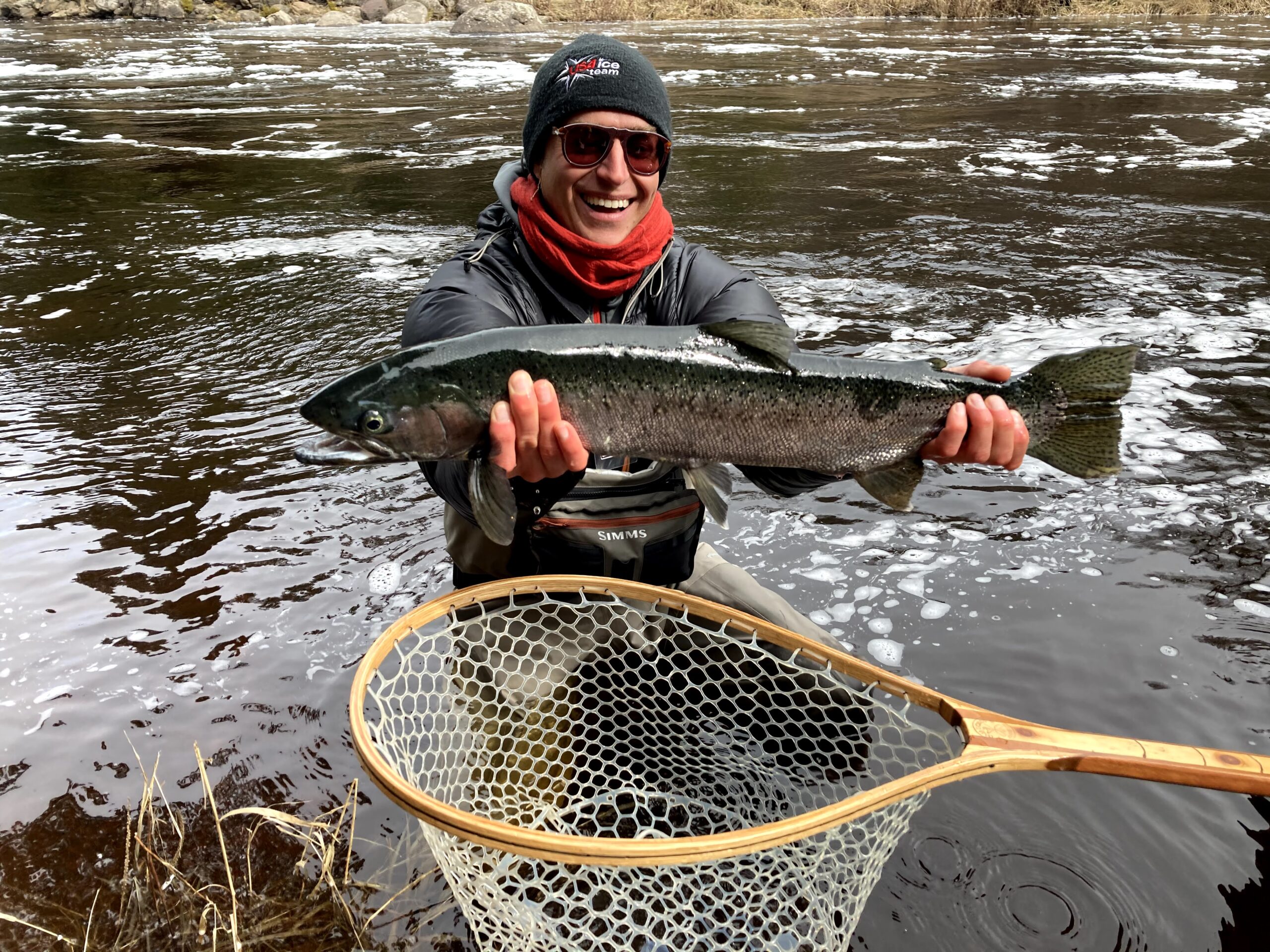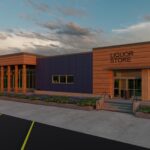Native brook trout ought to live a glorious life in crystal cold streams of the North Shore. That’s how we picture them, darting from pool to pool chasing underwater mayfly larvae, inhaling wayward grasshoppers, breathing oxygen-rich water. It would be a dream life, except that our changing climate keeps pulling dramatic surprises on them.
These surprises include summer droughts that drop water levels so low, fish can’t access cooler upstream water, or deeper pools. Fish have had their naturally shady forest habitat exposed to direct sun as streambank spruce and balsam succumb to spruce budworm. Then there are later and later warmer autumns that confuse brookies’ natural reproductive instincts.
How concerned should we be in these times of change for nature’s creations? And what are we, as humans stewards of the natural world, doing to support flora and fauna facing increased fluctuations in their living conditions?
Dean Paron, Minnesota DNR stream habitat coordinator, has been protecting river systems by removing barriers to fish movement and restoring watersheds in the Finland area and beyond since 2014. His team’s climate adaptation plan is going on 10 years of promoting climate resiliency in Arrowhead stream life.

Built-in Resiliency
Paron notes that nature has built-in resiliency: “One of the very important principles of ecology and population level dynamics is that at a population level, any one event, like a forest fire, or flash flood, is usually overcomeable. There will be short term impacts, but generally populations have the ability to respond.”
That said, the really concerning issue for Paron is the trend in change: “When you see continuous trends in timing, like say three out of four years you see an earlier spring, that’s when you start to get concerned. It’s the sustained trend over the years that will really have an impact at the population level.”
Windows of Time
In nature, all events are interconnected. Take the annual hatch of fish eggs. Brook trout, for example, lay their eggs in the fall, and their eggs hatch the following spring, producing fry (emergent fish). Paron explains the significance of this timing: “Fry hatch at a critical window. If they hatch too early, there may not yet be any food available for them to eat. If they hatch too late, other predators may have grown ahead of them, and they may be more susceptible to being preyed on. When you start shifting the phenology of a food web, it can throw things out of whack.”
In the short term, a negative effect on one “year class” of brook trout can be overcome in the following year’s hatch. But it won’t take many “off” windows in a row before the population cannot sustain itself.
Enhanced Data
Finland Area Fisheries is home to some of Minnesota’s most famous watersheds. Names like the Baptism and Manitou inspire awe and respect in those who love exploring these watery corridors of life. But Paron and his scientists go beyond just recognizing the beauty and natural history of these famed rivers.
The MN DNR plan calls for protecting intact river systems, and those systems predicted to be most resilient, thereby providing the best refuge to coldwater fish species, like brook trout. Paron and his crew spent years doing landscape analysis of watersheds in their management area, as well as studying land use cover and types. They have also conducted extensive watershed temperature monitoring, to collect the necessary data for making informed habitat restoration project decisions. These results are used to refocus restoration projects in strategic areas, and also to obtain conservation easements in key cold water areas.
Paron points out that studying the effects of climate change is always very complex, with a lot of nuances. “It’s very hard to say X will happen because of an earlier spring. What we do know is that things will probably be different. We don’t actually know all the components. We’re getting better, and we’re trying to look at a lot more rivers and lakes, and more long-term data, with robust information.”
Watershed Restoration
Combating climate change is a daunting task. Thankfully, our region is rich in scientists and partners who understand the need for human intervention on behalf of natural resources. “One positive thing is that there’s a lot of restoration work being done out there to keep watersheds resilient, and to implement adaptation strategies to at least allow pockets of strong populations,” recounts Paron.
One way in which humans can positively impact riverine environments is to replant trees along rivers that have been decimated by the spruce budworm. The current spruce budworm outbreak has affected over 700,000 acres of balsam fir and white spruce to date across northeastern Minnesota.
In response, the Nature Conservancy (lead), MN DNR Fisheries Finland Area, MN DNR Forestry, USFS, Trout Unlimited, and Lake and Cook County SWCDs have all partnered to plant climate resilient long-lived conifers and other tree species to promote long-term forest resilience in North Shore watersheds. These projects address the spruce budworm outbreak in high-priority riparian areas, and enhance forest resilience to future stresses, including future pest and disease outbreaks, wildfire, and a changing climate.

Paron notes the project’s accomplishments: “To date, 110 stream miles of riparian area have been planted in the Baptism River watershed, over 86 miles in the Manitou River watershed, and 8.5 miles in the Two Island Watershed.” Once these trees grow, they will play an important function in keeping North Shore streams colder thanks to shade made from their limbs and foliage.
Yet another example of human-led restoration is reinstallation of better stream culverts. The MN DNR Fisheries Finland Area, Lake County SWCD, Trout Unlimited, MN DNR Forestry, Lake County Highway Department, and Crystal Bay Township have removed over 17 undersized culverts that were fish barriers, and were causing stream water quality impacts. The partners replaced them with larger, bottomless culverts to allow for fish migration and sediment transport (an important river component). These projects have opened many miles of connection to important stream habitat that provides thermal refuge to fish, as well as access to better survival and spawning areas.
Resiliency Reigns
The streams and rivers of Lake Superior’s North Shore have been identified in multiple assessments as important strongholds for biodiversity. They provide habitat for a variety of terrestrial and aquatic wildlife, including native brook trout.
Paron retains his optimism despite the present-day challenges coldwater species face. “One thing to keep in mind is that nature, and fish species, are extremely resilient,” Paron suggests.
Still, this strong natural resiliency can be more expressed when coupled with a human planning touch. “Adaptation planning, in my opinion, plays an active role in natural resource management. We need to make sure we’re making the right choices, and collecting the right data today, so that we will have populations that we enjoy in the future,” summarizes Paron.




